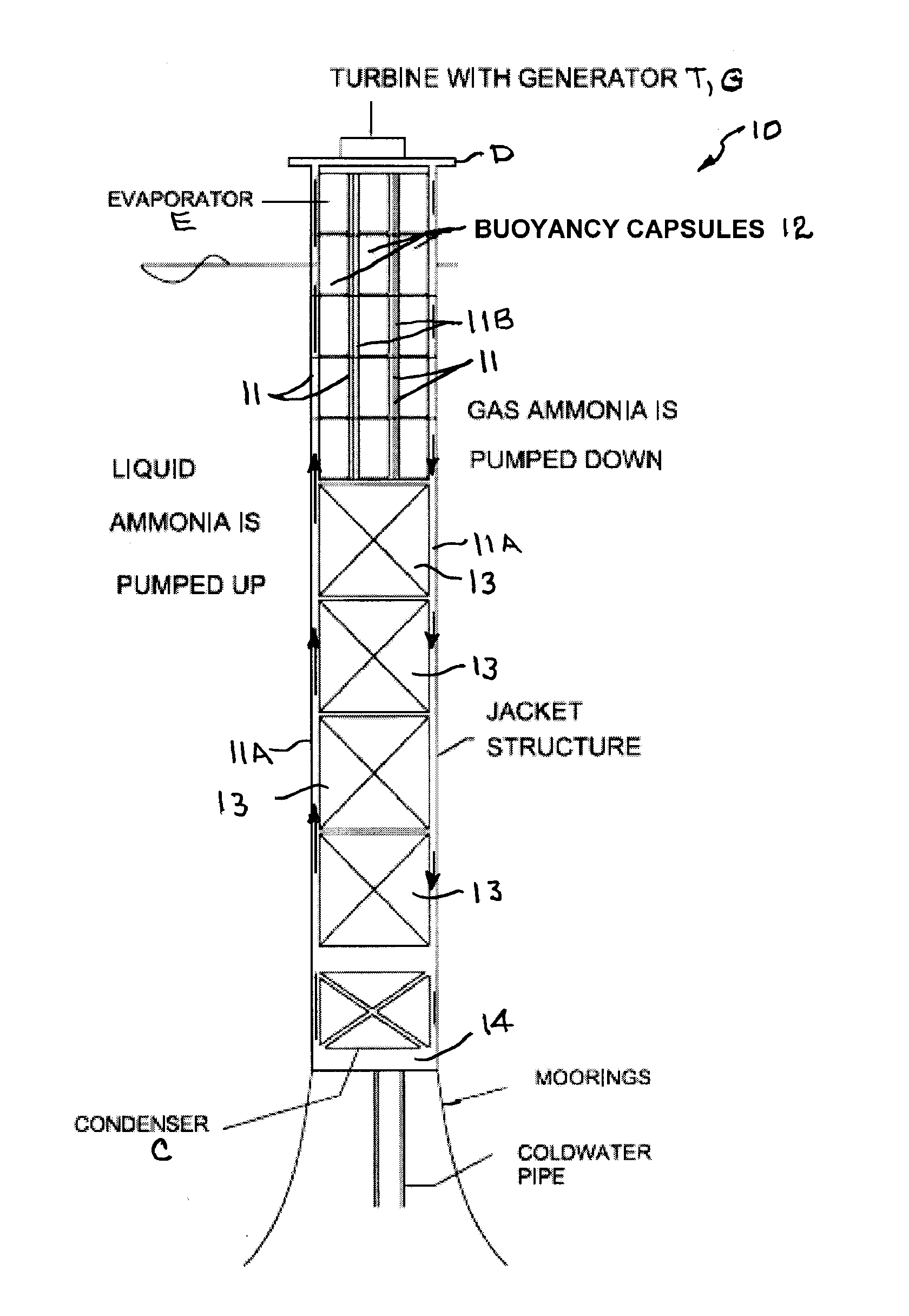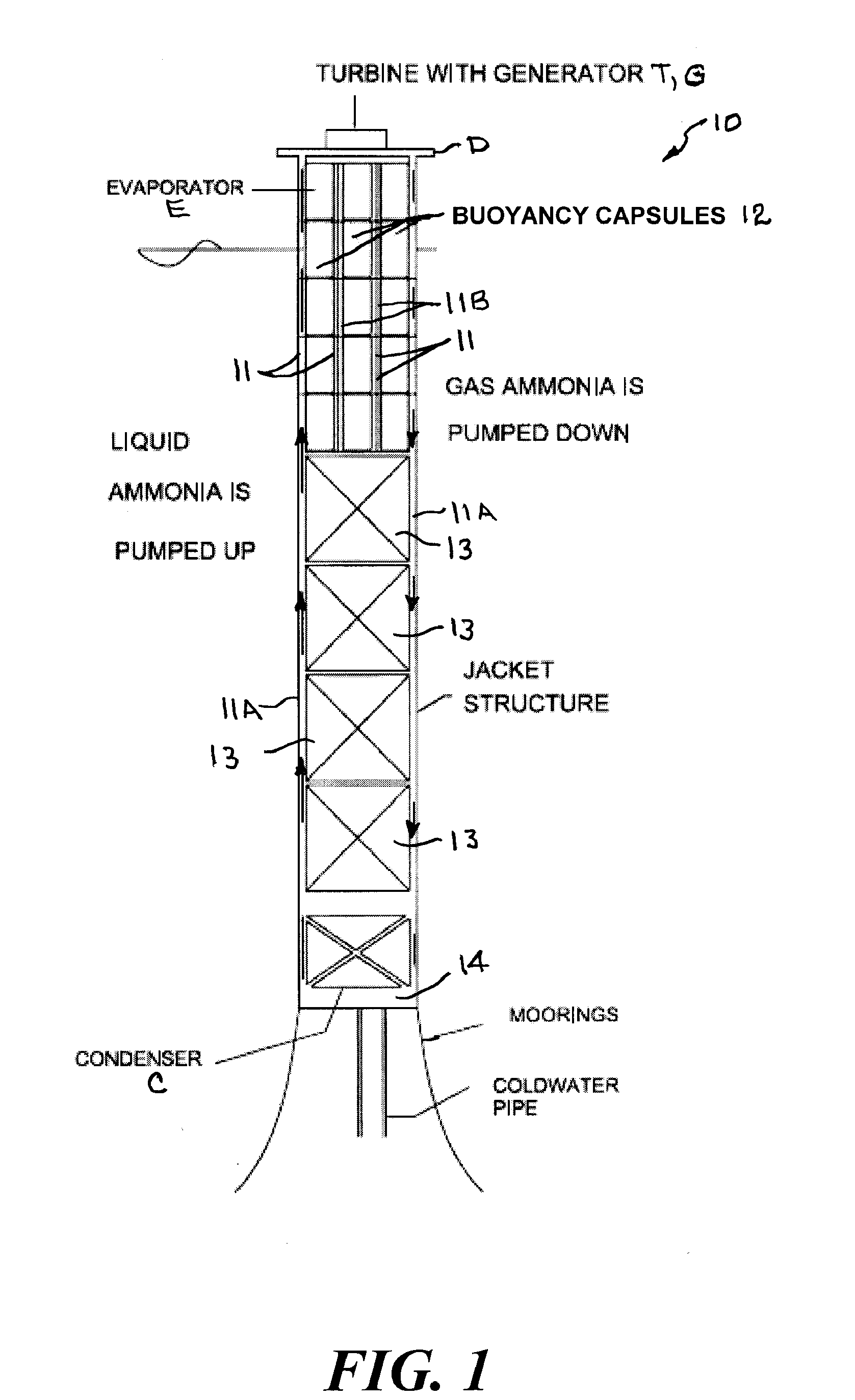Offshore floating platform with ocean thermal energy conversion system
a technology of thermal energy conversion and offshore floating platform, which is applied in the direction of sea energy generation, mechanical equipment, machines/engines, etc., can solve the problems of not being able to achieve cost effective commercialization. , to achieve the effect of reducing the length, increasing the stability of the platform, and significantly reducing the capital cos
- Summary
- Abstract
- Description
- Claims
- Application Information
AI Technical Summary
Benefits of technology
Problems solved by technology
Method used
Image
Examples
Embodiment Construction
[0036]The present offshore floating platforms having an ocean thermal energy conversion system controls platform construction and operational costs by utilizing a supporting platform particularly suited for the OTEC system. For example, a few types of deepwater offshore platforms are easy to fabricate but expensive to install. There are some vessels that are designed to be self-installed and mobile. The present invention utilizes such a platform. The present invention also incorporates independently movable or flexible buoyant free standing vertical flow pipes to transport working fluid from the turbine outlet to the subsea condensers.
[0037]The main technical challenge in an OTEC system is the large amount of warm and cold sea water to be used for the heat transfer processes. Typically, a 100 MW OTEC system requires 5,000 cubic ft. per second of cold water to be transported to the free surface from the deep ocean depth. Similarly, 8,000 cubic ft per second of surface warm water is t...
PUM
 Login to View More
Login to View More Abstract
Description
Claims
Application Information
 Login to View More
Login to View More - R&D
- Intellectual Property
- Life Sciences
- Materials
- Tech Scout
- Unparalleled Data Quality
- Higher Quality Content
- 60% Fewer Hallucinations
Browse by: Latest US Patents, China's latest patents, Technical Efficacy Thesaurus, Application Domain, Technology Topic, Popular Technical Reports.
© 2025 PatSnap. All rights reserved.Legal|Privacy policy|Modern Slavery Act Transparency Statement|Sitemap|About US| Contact US: help@patsnap.com



